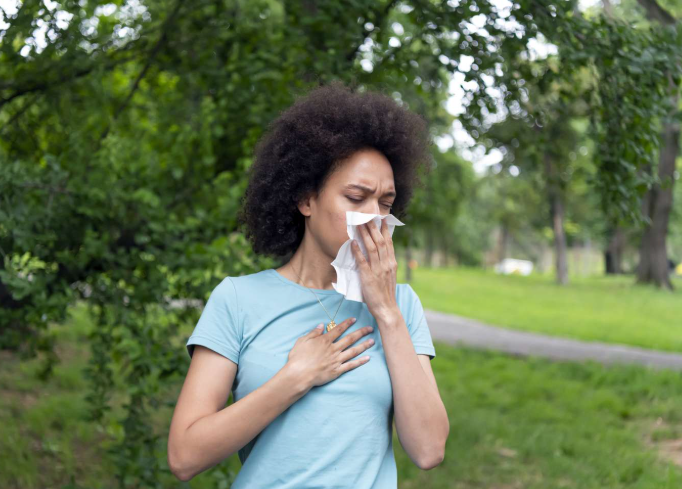Rising Cases of Walking Pneumonia: Surprising Factors Behind the Surge
Walking pneumonia, a milder form of pneumonia often caused by bacteria such as Mycoplasma pneumoniae, has been on the rise in recent years. Unlike more severe forms of pneumonia, walking pneumonia typically presents with milder symptoms, making it crucial to understand this subtle yet pervasive illness.
Understanding Walking Pneumonia
Walking pneumonia, also known as atypical pneumonia, often goes under the radar because it can mimic a common cold or the flu. Individuals suffering from walking pneumonia may still feel well enough to continue their daily activities, and this is where its name originates, as patients are often “walking” around with an undiagnosed illness.
Key Symptoms of Walking Pneumonia
Common symptoms that might suggest someone has walking pneumonia include:
- Persistent cough
- Low-grade fever
- Fatigue
- Headache
- Sore throat
- Shortness of breath
These symptoms can last from a few weeks to over a month, causing discomfort and spreading unknowingly if not identified and treated.
A Deep Dive into the Factors Behind the Surge
Environmental Changes
Recent environmental changes have played a substantial role in influencing the rise in cases of walking pneumonia. Factors such as increased pollution and alterations in weather patterns may contribute to respiratory health issues, making individuals more susceptible to infections.
Increased Global Movement
The modern world’s interconnectedness means that people travel more frequently and swiftly between countries and continents. This increased mobility facilitates the transmission of infectious diseases, including walking pneumonia, allowing outbreaks to spread more rapidly than in previous decades.
Lack of Awareness
Public awareness about walking pneumonia remains relatively low compared to other respiratory illnesses. Many people may mistake their symptoms for those of a common cold or flu, thus delaying treatment. Increased education about this condition can prevent its spread, yet awareness efforts have not kept pace with the rising incidence.
Demographic and Lifestyle Factors
Age Groups at Risk
While walking pneumonia can affect anyone, certain groups are more at risk:
Children and teenagers: School environments, where close contact is common, can facilitate the spread of Mycoplasma pneumoniae.
Adults over 60: The elderly may also experience more severe symptoms and are at higher risk of complications.
Lifestyle and Health Conditions
Lifestyle habits and existing health conditions can predispose individuals to walking pneumonia. Those with weakened immune systems, chronic illnesses, or respiratory conditions such as asthma are at a higher risk.
Prevention and Management Strategies
Preventing the spread of walking pneumonia involves both personal and community-based strategies. Here are some effective methods to reduce its impact:
Hygiene Practices
Maintaining good hygiene can significantly reduce the risk of transmission. Regularly washing hands, covering one’s mouth when coughing or sneezing, and avoiding close contact with infected individuals are simple yet effective measures.
Vaccination and Medical Awareness
Although there is no specific vaccine for walking pneumonia, staying up-to-date with general vaccines can help bolster the immune system. Additionally, raising medical awareness among healthcare practitioners can improve early diagnosis and treatment.
Healthy Lifestyle Choices
Adopting a healthy lifestyle can enhance immune function, making it more resilient against infections.
This includes:
- Balanced diet: Consuming a diet rich in fruits, vegetables, and whole grains.
- Regular exercise: Engaging in physical activity to bolster cardiovascular and respiratory health.
- Proper rest: Ensuring adequate sleep to support immune function.
The Role of Technology in Tackling Walking Pneumonia
Enhanced Diagnostic Tools
Advancements in technology have led to the development of better diagnostic tools that can identify Mycoplasma pneumoniae more quickly and accurately. Rapid tests and improved imaging techniques can facilitate timely intervention and mitigate the spread of walking pneumonia.
Telehealth Solutions
Telehealth offers a promising avenue for addressing walking pneumonia by enabling remote consultations and follow-ups. Through these services, healthcare providers can reach more people, especially in areas with limited medical infrastructure.
Societal Impact and Considerations
The rise in walking pneumonia cases has significant societal implications. As more people experience the illness, there can be increased absenteeism from work and school, impacting productivity and educational outcomes. Moreover, the strain on healthcare systems can escalate, underscoring the need for effective strategies to manage and prevent this condition.
Future Perspectives
As we contemplate the future, it is vital to consider multifaceted approaches to address the rising cases of walking pneumonia. Collaborative efforts across sectors, including public health, education, and technology, are required to effectively combat this growing health challenge. By increasing awareness, investing in research, and promoting healthy living, society can work towards reducing the incidence and impact of walking pneumonia.









